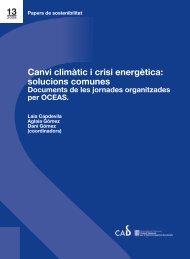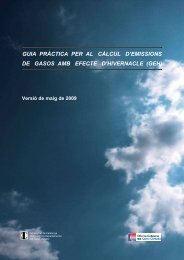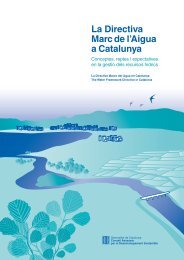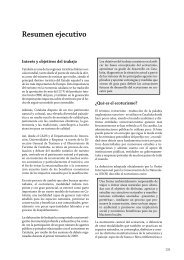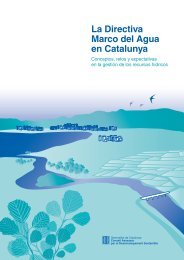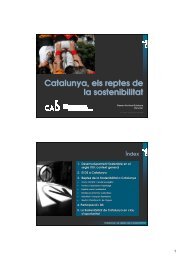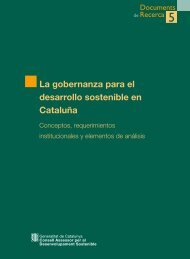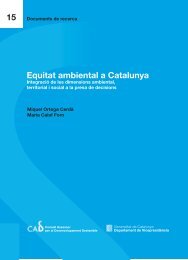Estratègies per al desenvolupament sostenible - Generalitat de ...
Estratègies per al desenvolupament sostenible - Generalitat de ...
Estratègies per al desenvolupament sostenible - Generalitat de ...
Create successful ePaper yourself
Turn your PDF publications into a flip-book with our unique Google optimized e-Paper software.
Developing a co-ordinated and continuous system of generation of knowledge.This does not involve obtaining information and knowledge on a single occasion,but establishing mechanisms of co-ordinated and continuous generation suchas data centres and an<strong>al</strong>ysis capacities, preferably by means of the supportand mobilisation of the set of existing centres.Agreeing criteria on the priorities of an<strong>al</strong>ysis. An<strong>al</strong>ysis should not become aforum for interminable <strong>de</strong>bates. An<strong>al</strong>ytic<strong>al</strong> work should be concentrated onwhat matters, on what can be done with current resources and politic<strong>al</strong> will.Ensure the objectives of the an<strong>al</strong>ysis are clear. An<strong>al</strong>ysis is least effective whereit <strong>de</strong><strong>al</strong>s with “themes” or “subjects”. Formulating questions will provi<strong>de</strong> directionto the an<strong>al</strong>ysis and <strong>de</strong>veloping solutions. For example, “watershed <strong>de</strong>gradation”is a less useful formulation than “what incentives have encouraged watershedconservation? How can we remove <strong>per</strong>verse incentives to <strong>de</strong>gra<strong>de</strong> keywatersheds? And who should make the changes?”Agree the types of output from the an<strong>al</strong>ysis and who will get them. It isimportant that the an<strong>al</strong>ysis should not be a complete surprise once it hasbeen produced, and so stakehol<strong>de</strong>r expectations and politic<strong>al</strong>/leg<strong>al</strong> proceduresand implications for conducting the an<strong>al</strong>ysis need to be discussed and agreedbeforehand. The hierarchy of possible outputs might first be discussed, to getexpectations right. These may be ranked, from least to most ambitious, as:data, findings (correlating key factors), conclusions (i<strong>de</strong>ntifying caus<strong>al</strong> links),recommendations and <strong>de</strong>sign. For example, will the output be “evi<strong>de</strong>nce”,“propos<strong>al</strong>s” for a policy or initiative, or a draft policy or project <strong>de</strong>sign itself?4.3. Stakehol<strong>de</strong>r an<strong>al</strong>ysis. Stakehol<strong>de</strong>rs are those people, groups or institutions whohave specific rights and interests in an issue, and related powers, knowledgeand skills. Stakehol<strong>de</strong>r an<strong>al</strong>ysis can help to draw out the interests of stakehol<strong>de</strong>rs,i<strong>de</strong>ntify conflicts of interests, positive and negatives relations between stakehol<strong>de</strong>rsin or<strong>de</strong>r to ascertain the potenti<strong>al</strong> for collective action.It is important that individu<strong>al</strong>s involved are “representative” of their stakehol<strong>de</strong>r groupor “constituency”. True representation will entail constituency agreement of thatrepresentation. Otherwise, the best that can be achieved is effective “sampling”.Whether representation or sampling is done must be ma<strong>de</strong> very clear.143




